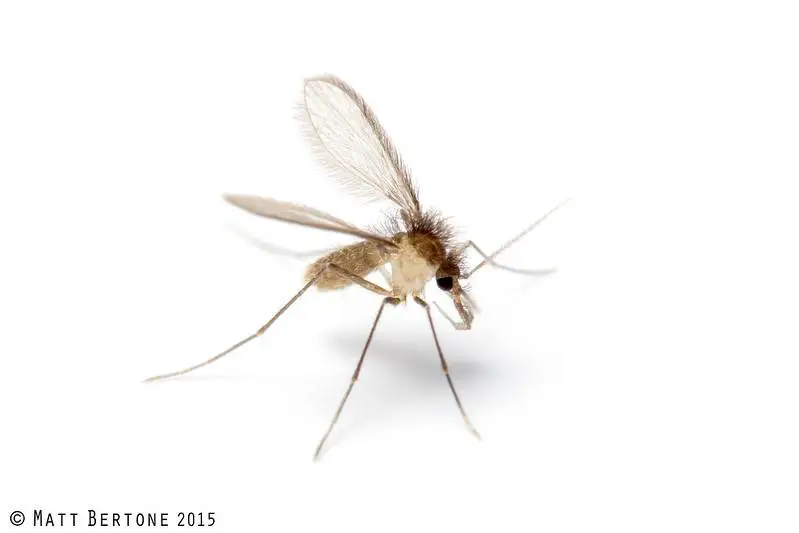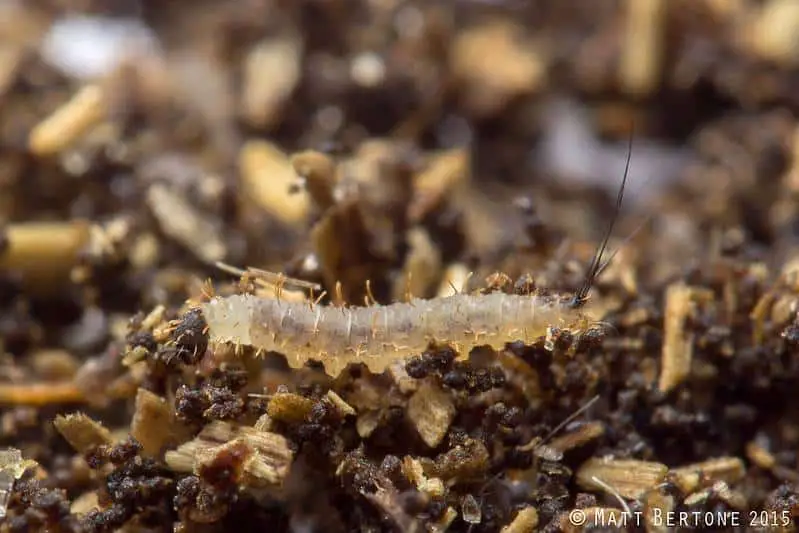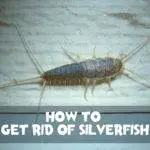Sand flies are tiny creatures that can cause serious problems for the unlucky ones, and they are difficult to deal with. In this guide, I’ll share what you need to know and how to get rid of sand flies.
To get rid of sand flies, apply repellent on your skin and wear long sleeves when you go outdoors. Consider treating the external walls and fence with insecticides, and installing traps outdoors. It is not feasible to treat the breeding ground. Put up screens to stop sand flies from invading your house.
Let’s drill in further for more details.
Things to Know about Sand Flies
Sand fly is a common name for various types of biting flies, depending on where you are. What I cover here is Phlebotomine sand flies, also known as No-See-Um, punky, or sand gnats. Notable genera of sand fly include Phlebotomus species and Lutzomyia species.

Phlebotomus sand flies are small and resemble mosquitoes. However, they are much smaller, with 1/16-1/8” body length. They have a hairy, golden or brownish body, and a pair of hairy wings. When resting, the sand flies hold their wings in a vertical V-shape.
Sand flies generally feed on nectar or sugary substances. Female sand flies need blood meal to lay eggs, and they are active at night.
Sand flies don’t travel far to search for food due to their small size and short flight distance. Therefore, they will bite anything nearby, including humans, livestock, pets, birds, reptiles, and even amphibians
Not much is known about sand fly breeding ground, except for a few species. We know some of them breed in moist organic matter.
The sand fly larvae feed on fungi, mold, and other decaying plant matter. After several molts, the larvae migrate to a drier location to pupate, and subsequently emerge into adults.
Sand flies are notorious carriers for several diseases such as both cutaneous and visceral leishmaniasis, Pappataci fever, vesicular stomatitis virus, and Carrion’s disease.
If you are keen to learn more about sand flies, check out its Wiki.
How to Prevent Sand Fly Bites
The most effective method to prevent sand fly bites is by applying DEET repellents. Picaridin and oil of lemon eucalyptus (also known as OLE, p-Menthane-3,8-diol, or PMD) also work well to prevent sand fly bites.
If you are looking for botanical repellents for sand flies, OLE or PMD is probably the most well-studied and proven to be effective. Aside from that, neem oil also shows promising results. Certain studies show that OLE is more effective in repelling sand flies than DEET.
Check out my guide if you need help choosing a suitable repellent.
Most of the repellent products available in the market do not specify sand flies in their label, which means they are not tested against sand flies even though the active ingredient in the product is effective in repelling sand flies. Using a product labeled specifically for sand flies gives you some assurance on the product efficacy.
These are some products labeled for use to prevent sand fly bites: Off! Deep Wood (DEET), Ranger Ready Tick & Insect Repellent (Picaridin) or Off! Botanical (PMD).
When you need to go outdoors where the biting pressure from sand flies is high, wear long sleeves and long pants. Sand flies have short proboscis that cannot penetrate clothes.
How to Deal with Sand Fly Bites
Sand fly bites can cause itchy welts on your skin. The welts subside by itself after 1-2 days. Apply insect bite lotions onto the welts to reduce itching.
We know sand flies can transmit a few serious diseases such as leishmaniasis. Fortunately, being bitten by sand flies doesn’t mean you will contract those diseases.
To become disease carriers, sand flies need to pick up the disease-causing pathogens from infected creatures. The pathogens propagate in the body of the sand flies until they reach certain numbers and/or the life stages. Only by then, sand flies can infect a person through bites.
If you develop any abnormal symptoms after being bitten by sand flies, seek medical attention ASAP.
How to Kill Sand Flies?
You can use carbon dioxide-baited traps, light traps, and chemical treatments to kill adult sand flies. Unfortunately, none of them address the breeding ground of sand flies, which continuously produce new sand flies.
Sand Fly Traps
Sand flies are attracted to carbon dioxide (CO2) and light. Any outdoor traps using CO2 and/or light to attract insects would work on sand flies. Traps with CO2 have a higher catch rate than those without.
I recommend using either Mosquitaire or Mosquito Magnet to trap sand flies. Do check out my review on those 2 products, how they work and tips on placement. Both products have proprietary lures designed specifically for mosquitoes. You can choose to use only CO2 but not their proprietary lures, if you don’t have mosquito issues.
If you prefer a trap with cheaper maintenance costs, consider getting DynaTrap instead. It attracts all sorts of insects through UV light instead of CO2. Without CO2, it is not as effective though.
Chemical Treatments
Fogging kills sand flies quickly and lowers the biting pressure if you have a heavy infestation. This should be carried out at night when sand flies are most active. Make sure you have good visibility when fogging at night for safety reasons.
Another method is to carry out residual spraying on external walls, landscape, and fencing to kill any sand flies that land on the treated surfaces. You can use Temprid FX for that. Bear in mind that it also kills other non-target insects.
Reduce Potential Sand Flies Breeding Ground
Destroying or drying out the breeding media kills the sand fly larvae and prevents future breeding. Based on the available information, sand flies breed in moist medium rich with organic matter. That includes soil, plant litter, termite mound, cracks on stones, tree holes, and burrows.

Try to avoid over-watering, water your planters in the morning so that the soil is not excessively wet throughout the night, reduce plant litter and excessive mulch, and treat and seal burrows. Hopefully, this will eliminate sand fly breeding.
However, it could be a complete waste of time because the sand fly species that you are dealing with may not breed in those places. Only 3% of the sand fly species have their breeding ground uncovered.
Moreover, sand fly larvae are very small, measuring between 1/64-5/64” in length. It is difficult to ascertain a sand fly breeding ground.
How to Prevent Sand Flies from Invading Houses?
Sand flies are mainly active outdoors. They may fly indoors through windows or doors if they are breeding near your house. You can easily stop them from invading your house by putting up screens on windows and doors.
Choose a window screen with small openings such as this one. Sand flies are small, and can come in through bigger holes. You can cut the screen and frame into a desired size and assemble it. The screen attaches firmly to the window frame through the included magnetic stripes.


